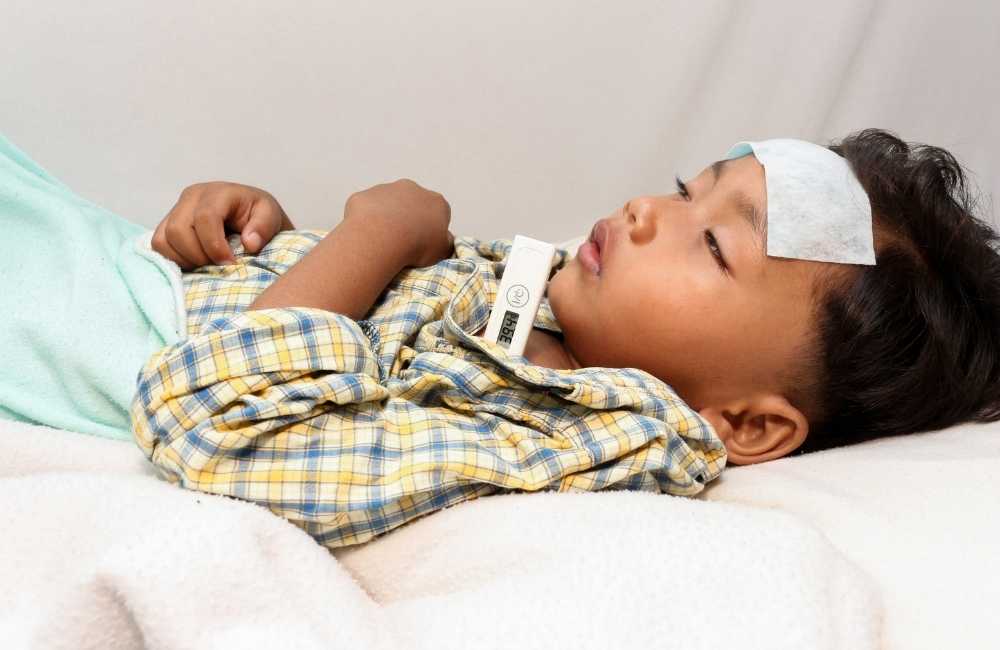Febrile seizures, also called febrile convulsions, are the most common childhood seizure disorder associated with an elevated temperature. The term “seizure” is often used interchangeably with “convulsion.”
The exact pathophysiology of febrile seizures is not clearly understood but it is believed to be due to an abnormal electrical discharge that occurs in the brain. Usually, brain cells, or neurons, flow in an organized fashion along the surface of the brain. A seizure occurs when there is an excess of this electrical activity.
During convulsions, the person has uncontrollable shaking that is rapid and rhythmic, with the muscles contracting and relaxing repeatedly.
Please note that febrile seizures are not epilepsy. Epilepsy is a repeated seizure. Also, it is important to distinguish between seizures and seizure disorders, which are two or more episodes of unprovoked seizures.
What are Febrile Seizures?
Febrile seizures are the most common age-dependent phenomenon or neurologic disorder occurring in 2 to 4 per cent of children between the ages of 6 months to 60 months (5 years) and are associated by a sudden spike in body temperatures above 38C or 100.4Fand with no other underlying seizure-provoking causes or diseases such as central nervous system (CNS) infections, electrolyte abnormalities, drug withdrawal, trauma, genetic predisposition or known epilepsy.
Usually, generalized seizures, last less than 15 minutes and not recurring for 24 hours.
Types of Febrile Seizures
-
Simple febrile seizures
Simple febrile seizures occur more commonly than complex febrile seizures and are characterized by a generalized seizure, that lasts less than 15 minutes, and does not recur within 24 hours.
-
Complex febrile seizures
Complex febrile seizures are characterized by the presence of at least one of the following features:
- Focality. Focal seizures start in a particular part of the brain.
- Duration of longer than 15 minutes.
- Recurrence within 24 hours.
Causes of Febrile Seizures
Febrile convulsions only happen when there is a rise in body temperature. The fever is usually due to viral or bacterial infections.
The growing brain of a child is more sensitive to fever than that of an adult. Febrile convulsions tend to run in families, although the reason for this is unknown
Symptoms of Febrile Seizures
Often, febrile seizures occur during the initial rapid rise in body temperature, and most develop within 24 hours of fever onset. Typically, seizures are viz:
- Generalized. Affect both sides of the brain.
- Clonic. Periods of shaking or jerking parts of the body.
- Atonic. Muscles in the body relax.
- Tonic. Muscles in the body become stiff.

The symptoms of febrile convulsions include:
- Loss of consciousness (blackout).
- Twitching or jerking of arms and legs.
- Breathing difficulty.
- Foaming at the mouth.
- Going pale or bluish in skin colour.
- Eye rolling, so only the whites of their eyes are visible.
- The child may take 10 to 15 minutes to wake up properly afterwards. They may be irritable during this time and appear not to recognize their parents.
Investigations for Febrile Seizures
Routine investigations are not required for simple febrile seizures other than to look for the source of the fever but if the child has a complex febrile seizure, neurologic deficits, or signs of a serious underlying disorder (e.g., Meningitis, metabolic disorders) testing should be done.
Tests to exclude other disorders are determined clinically:
-
Cerebrospinal fluid (CSF) analysis
This is done to rule out meningitis and encephalitis in younger infants, in those with meningeal signs or signs of CNS depression, or in those who have seizures after several days of febrile illness.
CSF analysis must also be considered if the child is not fully immunized or is taking antibiotics.
-
Serum glucose, sodium, calcium, magnesium, and phosphorus and liver and kidney function tests
These are done to rule out metabolic disorders especially if the history includes recent vomiting, diarrhoea, or impaired fluid intake. If there are signs of dehydration or oedema or if a complex febrile seizure occurs.
-
Brain MRI
This is done if neurologic examination detects focal abnormalities, if focal features occur during the seizure or post-seizure period, or if the post-seizure depression of the sensorium is prolonged.
-
Electroencephalography (EEG)
This is done if febrile seizures have focal features or are recurrent.
EEG typically does not identify specific abnormalities or help predict recurrent seizures, and it is not recommended after an initial simple febrile seizure in children with a normal neurologic examination.
Diagnosis
Diagnosis is from history, clinical examination and results of investigations. It is a diagnosis of exclusion. A patient with a normal general and neurologic exam, whose history is consistent with a simple febrile seizure, does not need a further laboratory, imaging, or neurophysiologic evaluation.
If a patient’s history is consistent with a complex febrile seizure, an electroencephalogram (EEG) is obtained to look for underlying abnormalities that might have predisposed the patient to seizures.
Treatment for Febrile Seizures
- Family education
The nurse and clinician should educate the family that even though dramatic in appearance, these seizures do not lead to neurological disease or dysfunction. The more parents are aware of this disorder, the less likely it is that they will rush to the emergency room or seek alternative unproven remedies.

- Antipyretic therapy
Fever is a normal response to infection and is usually harmless. Lowering the temperature can help prevent another febrile seizure during the immediate illness and makes it easier to stop febrile status epilepticus.
However, giving a fever reducer at the beginning of a febrile illness has not been shown to prevent a febrile seizure. The following measures should be taken viz:
-
- Keep the child cool by not overdressing and the room should have cross ventilation.
- Give plenty of fluid. Best given in small, frequent aliquots.
- Give fever reducers( Paracetamol and ibuprofen).
- Supportive therapy if seizures last less than 5 minutes.
- Anti-seizure drugs and sometimes intubation if seizures last more than 5 minutes
This requires:
-
- Drugs to end them. Drug therapy is usually intravenous or rectally, with a short-acting benzodiazepine
-
- (e.g., Lorazepam 0.1 mg/kg IV over 2 to 5 minutes repeated every 5 to 10 minutes up to 3 doses).
- Phenytoin equivalents)/kg IV may be given over 15 to 30 minutes if the seizure persists. In children up to 5 years of age, diazepam rectal gel is used.
-
- Careful monitoring of circulatory and respiratory status.
- Intubation may be necessary if the response is not immediate and the seizure persists or if anti-seizure therapy leads to apnea.
Conclusion
Simple febrile seizures themselves are not thought to cause neurologic abnormalities. However, in some children, a febrile seizure may be the first manifestation of an underlying seizure disorder or unrecognized neurologic disorder. Febrile status epilepticus (continuous or intermittent seizures that last more than 30 minutes without neurologic recovery in between).
Children with status epilepticus are at risk of brain damage. If a child has febrile seizures, place him/her in a recovery position and note how long the seizure lasted and do not attempt to put anything into the child’s mouth (drugs, spoon, spatula etc.) during the seizure attacks because the child can injure self.

